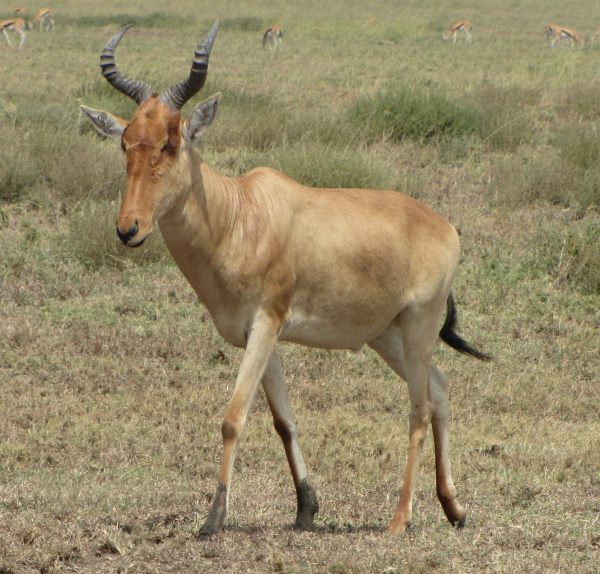Facts About Hartebeest
The hartebeest, commonly referred to as the kongoni, is a remarkable African antelope with eight recognized subspecies, some of which are now considered separate species. These animals are quite sizable, standing just over a meter tall at the shoulder. They possess distinctive features such as elongated foreheads, uniquely shaped horns, short necks, and pointed ears. Their long legs are marked with black, and they boast sleek, short coats that vary in color depending on the subspecies.
Hartebeest are social creatures, forming herds ranging from 20 to 300 individuals. They primarily graze on grasses. Mating occurs year-round, with peaks that vary by subspecies. Both males and females reach sexual maturity between one and two years of age. After a gestation period of eight to nine months, a single calf is born. These antelopes typically inhabit dry savannas and wooded grasslands, often migrating to more arid regions after rainfall.
Regrettably, hartebeest populations have significantly declined due to habitat destruction, hunting, human settlement, and competition with livestock. The conservation status of the eight subspecies varies: the Bubal hartebeest is extinct, the red hartebeest population is increasing, and the Tora hartebeest is critically endangered. In several African countries, hartebeest have gone extinct, but they have been reintroduced in others, primarily because they are popular game animals.
The name "hartebeest" likely originates from the Afrikaans word "hertebeest" which means "deer beast." Scientifically, they are classified as Alcelaphus buselaphus, a name first assigned by Peter Simon Pallas in 1766. There have been debates about classifying Lichtenstein's hartebeest as a separate genus, but genetic studies have confirmed its classification within the Alcelaphus genus.
Hartebeest are known for their alertness and cautious behavior, which enables them to quickly escape predators using their long legs. They exhibit unique mating behaviors, complex social structures, and distinct vocalizations. Their ecology and behavior are influenced by factors such as parasites, diseases, diet, reproduction, and habitat preferences.
Historically, humans have hunted hartebeest for game and trophies, and they were an important source of meat. Hartebeest meat is considered nutritious, with specific health benefits. Over time, the relationship between humans and hartebeest has evolved, reflecting changes in hunting practices and their economic significance.

 Sudan
Sudan